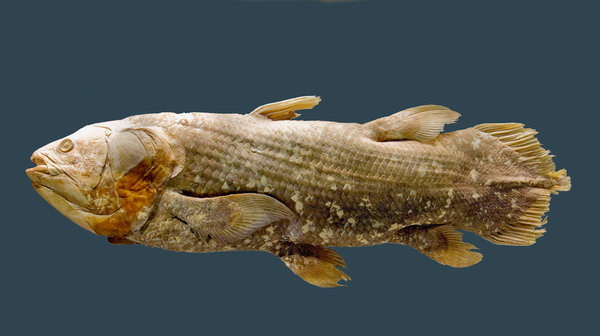Dinosaurs themselves may no longer roam the earth, but many of their relatives are still around today as birds, including birds and members of the Crocodilia family. Fish from the order Coelacanthiformes were thought to have gone extinct during the mass event that wiped out the dinosaurs until one was caught in the 1930s. Since then, a few more coelacanths have been found, and scientists have been using these fish and their fleshy fins to study the transition from water to land.

Most fish are ray-finned fish, meaning that their fins are made of spines with a webbing of skin. In comparison, coelacanths are lobe-finned fish, meaning that their fins are supported by a bone-like structure that is more like the limb of a reptile or a mammal. Along with lungfish, these fish are the closest living relative to the ancestral tetrapod, suggesting that somewhere in there was an animal that colonized land.
Yesterday, Nature published a study in which the coelacanth genome was sequenced in search of genes that may have helped that intermediate organism colonize land. The fish don’t have placentas, but their genome has a gene that is similar to the ones that help in building the placenta in animals that do. The research team also found an enhancer sequence controlling limb formation that was in coelacanths and animals but not normal fish. When this enhancer sequence was spliced into mice, it produced a somewhat normal limb.
The sequencing also determined that lungfish were actually more closely related to the first tetrapod than coelacanths, but considering the lungfish’s genome is 100 billion base pairs as opposed to the coelacanth’s 2.8 billion base pairs, it’ll be a while until it’s sequenced. In the meantime, comparing the coelacanth genome to modern tetrapods is the best clue for finding what genes led to that first foot on land.






